Dolls sometimes have a very visible role in Japanese culture, such as on Girls’ Day (Hinamatsuri), when they are shown both at home, and in public. There are the far more common kokeshi too. So, with this in mind, it’s perhaps not surprising that they are considered more important than other toys or ornaments. Similarly, after being a treasured companion during a child’s upbringing, or on display in the home for many years, simply throwing them away when they aren’t wanted anymore is hard for a lot of people to do. They are reminders of the past, and for some, the dolls are also thought to contain memories, or even have souls.
Hence then the popularity of ningyo kanshasai, which are performed at Shinto shrines, and ningyo kuyo at Buddhist temples — ceremonies that purify the dolls, as well as allowing the owners to say a final thank you and goodbye.
At a recent ningyo kanshasai held at Tokyo’s Meiji Shrine, this meant a huge amount of departing dolls were carefully put on display before being disposed of.
A staggering array of figures that was intriguing, and at the same time, more than a little unsettling.
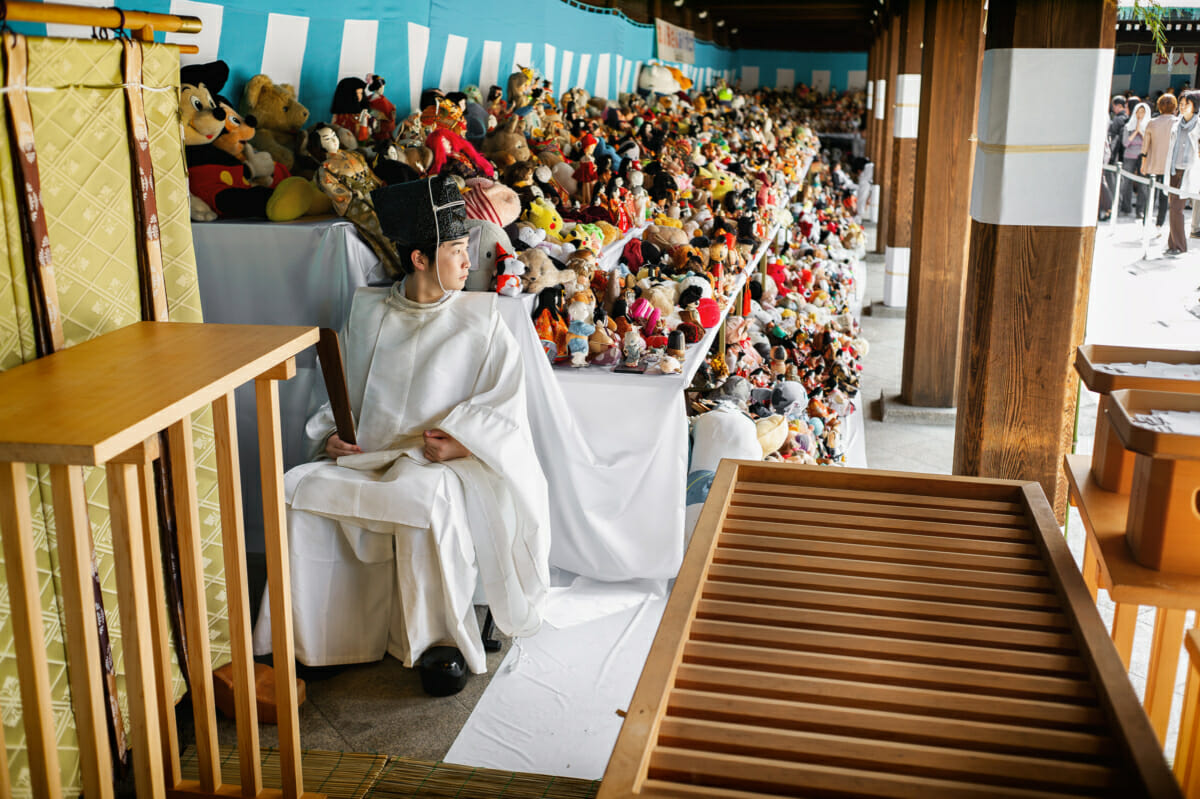
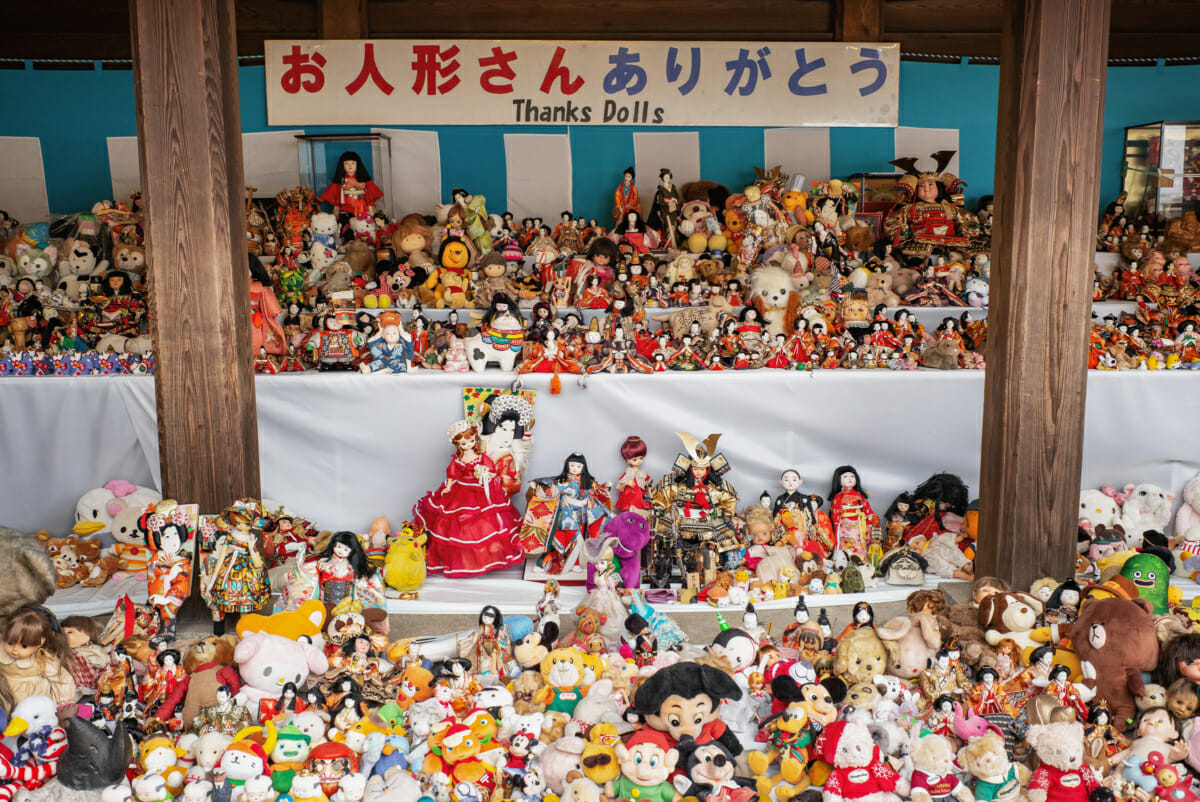
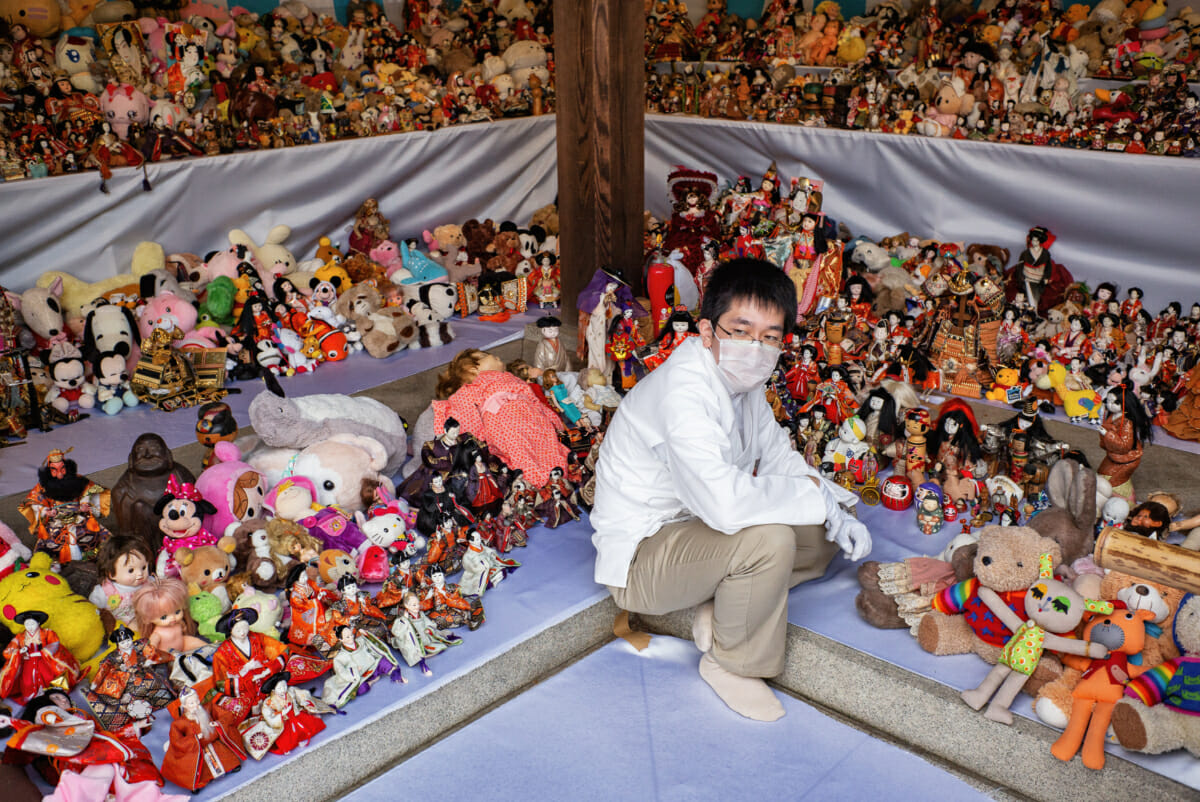

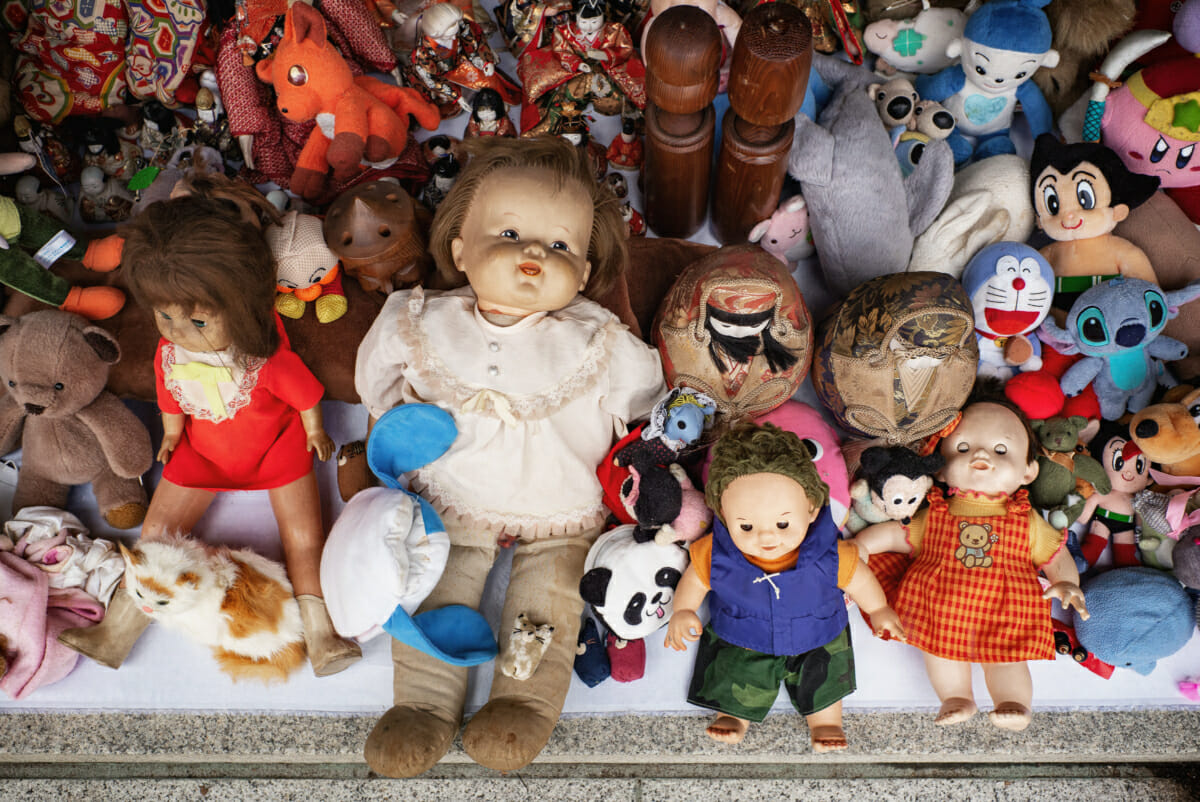
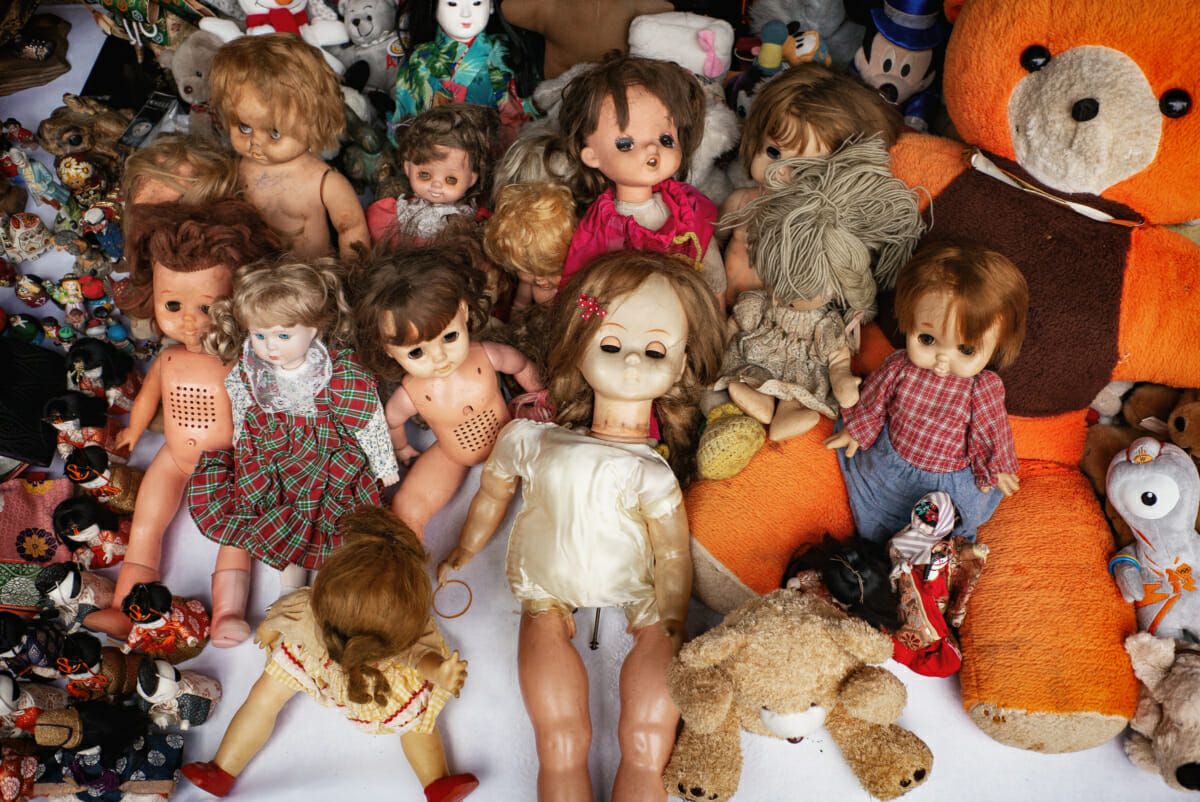
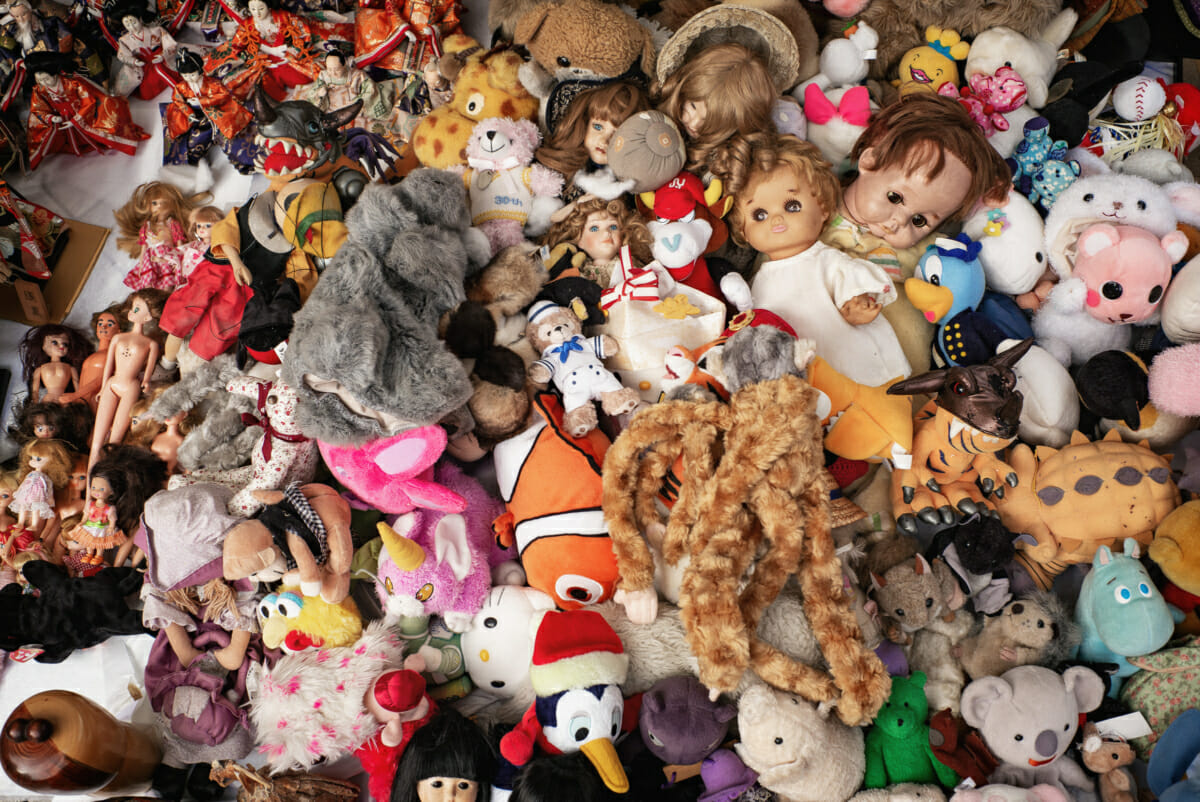
Harry says
I never heard of this before. Nice idea but kinda creepy!
Lee says
It is a nice idea. You could see what it meant to some people too.
Some of the dolls are without a doubt a bit disturbing, but to be honest, it’s all done in such a way that it doesn’t feel unpleasant at all. Quite the opposite in fact.
Coli says
Oh how this island we live on never ceases to amaze me. If done in black and white, these pictures could be used to promote a horror movie 🙂
Lee says
I know eh? Japan is far from perfect, but it’s ability to surprise and amaze is something I will always appreciate.
Some of the dolls were truly terrifying, but it was hard to get very close. Perhaps for the best anyway!
Jenn says
Oh my this is interesting. I think it’s way better than putting them in the trash! 🙂
Lee says
Definitely. Good for those leaving dolls behind, and also good for people like me who were just passing by.
You could see what it meant to some people too, so it clearly serves a worthwhile purpose.
cdilla says
Incredible. The depth of colour and fineness of focus right to the edges is fantastic.
All those dolls. There should be a Toy Stoy film set here.
Are these events only in October?
They should enlist Sebastian Masuda to arrange the displays.
https://tinyurl.com/y787p8s8
Lee says
Cheers. Wish I could have got more photos like the last one to be honest, but unfortunately the barriers prevented it.
Yeah, just this one in October at Meiji Shrine. Only a one day event too. Not sure about the others.
Blimey, there’d be some bright colours if they did!
Arne Anka says
Yeah, I knew I’ve seen the 1st picture before… https://www.tokyotimes.org/ningyo-kuyo-a-japanese-doll-funeral/
Still it’s just as strange but somehow touching way to dispose the dolls.
Lee says
Yes, well spotted! There were no priests present when I was there this year, so it was good to dig that photo up again.
It is. A bit odd, and some of the dolls really are disturbing, but overall it’s very touching. Saw a few people praying for the dolls, which brought home just how much they thought of them.
YTSL says
I’m not Japanese but I totally am on board with the idea/sentiment that “dolls are also thought to contain memories, or even have souls”. After all, I’m sure those who had favorite dolls/plushies as children — and sometimes well into adulthood — have talked to, and confided in, them the way they have done so with good friends.
cdilla says
Tru dat. I have a few small “friends” who survived the decades and sit on my shelves watching over me. Too delicate to take travelling like Puppet Ponyo I’m afraid but they have a nice view out of the window and can watch me writing about my travels 🙂
YTSL says
Hi cdilla —
Thanks for checking out my blog (and thus getting to know about Puppet Ponyo). I’m happy to hear that you have a few small “friends” who, even while they can’t accompany you on your travels, can watch over you while you write. 🙂